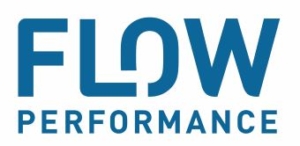From Pre-Construction planning to execution via our Construction Execution Support and transitioning to plant operations, Flow’s integrated approach addresses every phase of the construction lifecycle. We offer tailored solutions that work with your tools or ours, optimizing workflows, integrating people and processes, and delivering comprehensive training. By embedding real-time intelligence and governance into every phase, we eliminate silos, reduce risks, and ensure projects are delivered on time, within budget, and with operational excellence from start to finish.
Current Landscape
The global energy sector is undergoing a transformative shift, with increasing demand for sustainable and reliable power sources driving investments in nuclear energy infrastructure. Over 80 Small Modular Reactors (SMRs) are in active development worldwide, with North America leading deployment plans (IAEA, 2023). The U.S. Department of Energy projects 10–15 SMRs operational by 2035, while Canada aims to bring 4 SMRs online by 2030. Globally, over $150 billion is slated for nuclear refurbishments, restarts, and new builds in the next decade, including 45+ aging reactors requiring modernization (World Nuclear Association, 2023). However, complex regulatory environments, outdated infrastructure, and fragmented project execution continue to hinder progress.
- Challenge: 60% of nuclear construction projects face delays due to regulatory misalignment, leading to 20% cost overruns (McKinsey, 2023).
- Stakeholder Misalignment: Conflicting priorities between investors, regulators, and communities inflate costs by $8–12 million per project (Forrester, 2023).
- Tool Underutilization: Only 35% of construction management software capabilities are leveraged effectively, exacerbating siloed workflows and compliance gaps (Gartner, 2023).
- Knowledge Gaps: 70% of refurbishment projects experience operational disruptions post-handover due to incomplete documentation or training (Nuclear Energy Institute, 2023).
Flow Performance’s Construction Support Services directly address these pain points through pre-construction alignment, execution precision, and systematic Return-To-Service (RTS) strategies. By integrating deep technical expertise with regulatory acumen, Flow ensures projects adhere to safety, budgetary, and timeline requirements while fostering stakeholder consensus.
Key Benefits of Flow’s Construction Support Services
- Regulatory & Stakeholder Alignment:
- Pre-Construction Roadmaps: Flow resolves regulatory ambiguities and aligns stakeholder expectations, reducing approval timelines by 30% and avoiding $5M+ in compliance penalties annually.
- Transparent Cost Forecasting: Mitigate hidden risks (e.g., environmental remediation) with data-driven budgets, cutting cost overruns by 25%.
- Efficient Construction Execution:
- Unified CMS Platform: Flow’s Construction Management System automates workflows, centralizes compliance tracking, and provides real-time insights, reducing delays by 40%.
- Tool Consolidation: Integrate legacy systems with modern solutions (e.g., BIM, IoT), boosting tool utilization rates to 80% (McKinsey, 2023).
- Seamless Operational Transition (RTS):
- Available Spare Parts: AI-driven inventory planning ensures 98% spare parts availability at startup, reducing unplanned downtime by 60% (World Nuclear Association, 2023).
- Configuration Management: Track system changes and equipment specifications in real time, ensuring 100% audit readiness and eliminating configuration errors (NEI, 2023).
- Maintenance Program Quality: Deliver standardized, data-backed maintenance protocols, cutting long-term operational costs by $4M per facility and reducing unplanned outages by 50% (Gartner, 2023).
- Knowledge Preservation: Flow’s RTS phase captures 100% of critical project data, eliminating post-handover expertise gaps.
- Training & Documentation: Tailored operator training and digital manuals reduce startup delays by 50% and ensure compliance with evolving safety standards.
- Proactive Risk Mitigation:
- Governance Frameworks: Formalize accountability structures to track punch-list items and safety protocols, ensuring 95% regulatory adherence across sites.
- Spare Parts Optimization: AI-driven inventory planning cuts long-term operational costs by $3M per facility.
Project & Construction Setup
We act as your strategic liaison, guiding stakeholders through a structured process. From defining regulatory and technical requirements to addressing and tracking community concerns, we establish clear ownership, set measurable milestones, and create a unified roadmap for success. Our approach ensures risks are identified early, communication is streamlined, and everyone moves forward with shared accountability.
Construction Execution Support
Flow’s Construction Execution Support System integrates seamlessly with your existing Enterprise Management Systems, technology stack and data ecosystems or deploys as a purpose-built solution. Our approach ensures precision by:
- Automating Progress Tracking: Real-time dashboards for budgets, timelines, and compliance.
- Facilitating issue resolution: Drive the real work and address barriers to work exectuion.
- Centralizing Documentation: A single source of truth for all project data.
- Aligning Schedules: Semantic Models for smarter decision-making and resource allocation.
- Enforcing Compliance: Automated audits and safety protocol tracking across sites.
Flow’s system eliminates silos by automating tedious workflows like progress reporting and change orders, issue resolution and escalations, freeing your team to focus on execution. Whether harmonizing with your current tech stack or replacing outdated processes, Flow delivers a system that drives progress, not just tracks it.
Return-to-Service (RTS) Optimization
Flow Performance’s Return-To-Service (RTS) phase ensures projects don’t just end—they evolve. As construction winds down and operations ramp up, we bridge the critical gap where understaffed project teams and anxious plant operators risk misalignment. Our systematic approach captures and transfers vital knowledge, from equipment specifications to maintenance workflows, while delivering comprehensive documentation and targeted training for operational teams.
Flow acts as the governance backbone during this high-stakes transition, tracking punch-list items to completion and ensuring seamless handover of systems, tools, and data. We partner with your operations group to set up the right processes—whether integrating with your existing Operating System (OS) or implementing Flow’s tailored solution—to optimize asset performance from day one.
By addressing risks like incomplete spare parts lists, untrained staff, or undocumented protocols, we turn post-project chaos into operational clarity. Our structured RTS phase eliminates the “knowledge black hole” between construction and steady-state operations, ensuring plants launch with confidence. No more scrambling to retrofit training or reverse-engineer documentation—Flow’s proactive governance and transition process keeps teams aligned, resources allocated, and accountability anchored.
Flow’s unique value lies in its nuclear-specific expertise, spanning decades of equipment familiarity, regulatory navigation, and lifecycle management. By transforming chaos into clarity, Flow ensures projects transition from blueprints to operational excellence—on time, on budget, and aligned with global energy goals.

